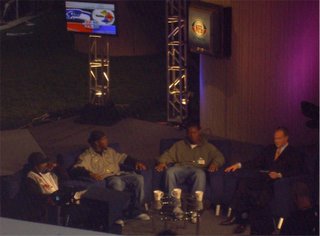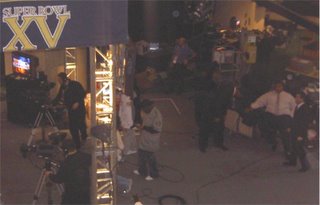Diving into deep POV
I'm a bit late in posting. Recently, I've been working on rewriting the prologue for Swan's Song, which I'll post when I'm finished. Until then, I'll address some of my comments I made in my critique, specifically point-of-view (POV) issues.
A fiction writer needs to have a good grasp on POV to create an intimate relationship between the reader and the characters. The purpose of POV is not only for clarity and understanding, but also to make the reader one with the POV character.
Today, it suits my purposes to talk only about 3rd person POV.
In 3rd person POV a scene is written from the perspective of only one character—the POV character. This helps draw the reader into the story and creates an intimacy between the narrator and the reader.
3rd person POV is written in narration in a style similar to omniscient, but like 1st person POV it focuses on a single person per scene—the POV character. The information relayed in the story is based only on what the POV character can see, feel, hear, smell, think, know, etc.
In the Swan's Song prologue, John is our POV character.
--He knows that his wife died a month ago.
--He feels the wool blanket catches on his rough fingers. Whenever he breathes a sharp pain stabs his ribs.
--Cedar smoke irritates his nostrils. His arms ache from holding his daughter. Pain cuts through his heart at the thought of giving his child away.
--He watches the woman approach him. These are all things John can know as our POV character.
However, he can't know the woman's thoughts, or her experience that might form her reaction to him. He can't know that her shoes are pinching her feet, unless there's an outward indication of this. Another thing he can't know is the look in his own eyes—since they're impossible for John to see.
In the example above, you'll notice that my first comment refers to John's internal monologue (thoughts). However, because this scene is entirely in John's POV it's not necessary to stress his thoughts by writing them in the first person. Even incorporated into the narrative, the reader will understand that these are John's thoughts. The italics also interrupt the flow of the passage. It distracts the reader.
As previously stated, our POV character, John would focus on what he's thinking or feeling, not on the look in his own eyes.
This third illustration also indicates that I've stepped out of John's POV. By referring to John as "the patient" I'm distancing the reader from the story and describing it as if the narrator is a witness instead of a participant.
Other resources:
Seeing is Believing – Gail Gaymer Martin
What Point of View – Callum Shakespeare
First Person or Third – Tara K. Harper
A fiction writer needs to have a good grasp on POV to create an intimate relationship between the reader and the characters. The purpose of POV is not only for clarity and understanding, but also to make the reader one with the POV character.
Today, it suits my purposes to talk only about 3rd person POV.
In 3rd person POV a scene is written from the perspective of only one character—the POV character. This helps draw the reader into the story and creates an intimacy between the narrator and the reader.
3rd person POV is written in narration in a style similar to omniscient, but like 1st person POV it focuses on a single person per scene—the POV character. The information relayed in the story is based only on what the POV character can see, feel, hear, smell, think, know, etc.
In the Swan's Song prologue, John is our POV character.
--He knows that his wife died a month ago.
--He feels the wool blanket catches on his rough fingers. Whenever he breathes a sharp pain stabs his ribs.
--Cedar smoke irritates his nostrils. His arms ache from holding his daughter. Pain cuts through his heart at the thought of giving his child away.
--He watches the woman approach him. These are all things John can know as our POV character.
However, he can't know the woman's thoughts, or her experience that might form her reaction to him. He can't know that her shoes are pinching her feet, unless there's an outward indication of this. Another thing he can't know is the look in his own eyes—since they're impossible for John to see.
She'll be here soon. There's so little time. Oh, my chest hurts. A cough shook him to his bones and he leaned against the wall for balance. Several minutes passed before he could move.
Comment: Since we're in John's POV this can be turned into narrative while still keeping the effect of it being in his thoughts.
In the example above, you'll notice that my first comment refers to John's internal monologue (thoughts). However, because this scene is entirely in John's POV it's not necessary to stress his thoughts by writing them in the first person. Even incorporated into the narrative, the reader will understand that these are John's thoughts. The italics also interrupt the flow of the passage. It distracts the reader.
He motioned to the cradle in the corner and the look in his eyes begged the woman...
Comment: If we are in John's POV he wouldn't be thinking about the look in his eyes.
As previously stated, our POV character, John would focus on what he's thinking or feeling, not on the look in his own eyes.
The doctor bent over the patient feeling his rapid pulse.
Comment: Put this in John's POV. Example: The doctor's finger squeezed his wrist.
This third illustration also indicates that I've stepped out of John's POV. By referring to John as "the patient" I'm distancing the reader from the story and describing it as if the narrator is a witness instead of a participant.
Other resources:
Seeing is Believing – Gail Gaymer Martin
What Point of View – Callum Shakespeare
First Person or Third – Tara K. Harper





